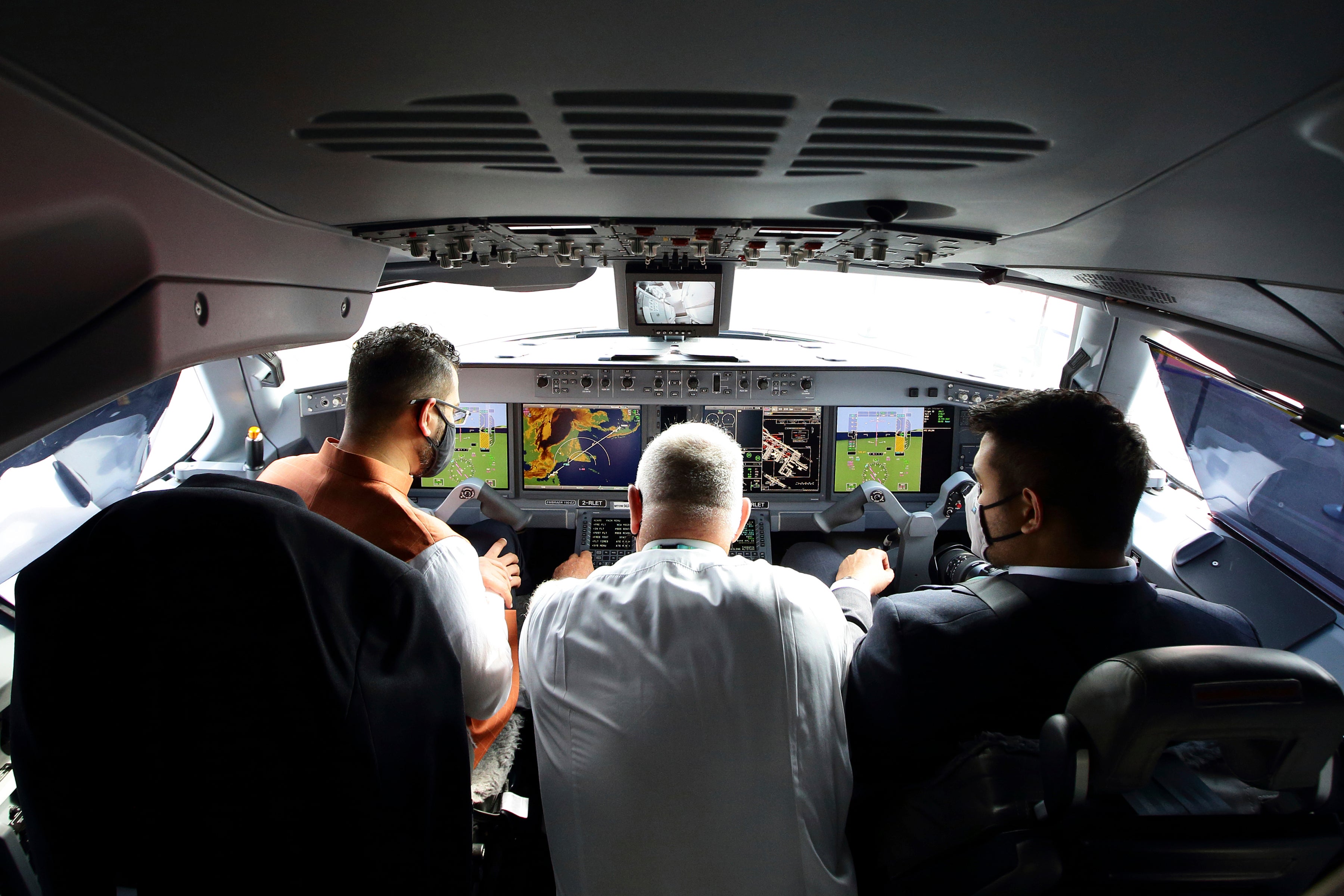Singapore air show subdued 2 years into pandemic
Singapore’s biennial air show opened Tuesday on a smaller scale than before the pandemic, even as the aviation sector gears up for a recovery two years after coronavirus outbreaks nearly paralyzed air travel

Your support helps us to tell the story
From reproductive rights to climate change to Big Tech, The Independent is on the ground when the story is developing. Whether it's investigating the financials of Elon Musk's pro-Trump PAC or producing our latest documentary, 'The A Word', which shines a light on the American women fighting for reproductive rights, we know how important it is to parse out the facts from the messaging.
At such a critical moment in US history, we need reporters on the ground. Your donation allows us to keep sending journalists to speak to both sides of the story.
The Independent is trusted by Americans across the entire political spectrum. And unlike many other quality news outlets, we choose not to lock Americans out of our reporting and analysis with paywalls. We believe quality journalism should be available to everyone, paid for by those who can afford it.
Your support makes all the difference.Singapore’s biennial air show opened Tuesday on a smaller scale than before the pandemic, even as the aviation sector gears up for a recovery two years after coronavirus outbreaks nearly paralyzed air travel.
The three-day air show began Tuesday. Members of the general public are not allowed, but about 600 exhibitors are showing their products and services. That's down from 930 during the last show in February 2020, when coronavirus cases were just beginning to rise.
Experts say the aviation market is poised for recovery, with defense spending on the rise and commercial aviation picking up despite the latest wave of omicron-driven infections.
Those attending the show must observe stringent coronavirus rules including regular COVID-19 testing and potential isolation for those found infected with the coronavirus.
The air show began in 2008. It typically attracts senior corporate executives of aviation companies and delegations from countries around the world. About 13,000 people are expected to attend this year's show, less than half the 30,000 who visited in 2020.
Many Southeast Asian countries have kept their borders closed or imposed strict limits and quarantine and testing requirements to try to curb outbreaks that have ravaged most countries. Some are now slowly relaxing those precautions.
“The air show comes at an interesting time, because the market in Southeast Asia is finally starting to recover after almost two years of decimated impact on air travel, particularly in the international market,” said Brendan Sobie, an independent aviation and aerospace analyst based in Singapore.
Many Chinese companies are staying away from this year's show, likely because of Beijing's “zero-COVID" policies that involve lengthy quarantines.
Major exhibitors at this year’s show include Boeing, Airbus and Lockheed Martin. Boeing’s newest widebody jet, the 777X, made its Asian debut at this year’s show, demonstrating aerial maneuvers during a daily flight display.
The 777X is about 20% more fuel efficient than the aircraft it replaces, according to Darren Hulst, the vice president of marketing for Boeing’s commercial airplanes. Singapore Airlines is among Boeing customers planning to include the new jet in their fleets.
“The number one trend we’re seeing is how resilient the demand for aviation is and how important it is for people to connect,” Hulst said in an interview Tuesday. He noted that short-haul flights have recovered quickly in regions like the U.S., where high gas prices are discouraging people from traveling by car.
“As we see the industry recover more, as more and more restrictions are lifted on long haul travel, we’ll see the market continue to recover and we think the industry will be back to where it was in 2019 somewhere by the end of 2023 or early 2024,” Hulst said.
Boeing rival Airbus said Monday that it had confirmed 48 orders for new aircraft — 28 A320neos for Kuwait’s Jazeera Airways, and 20 Airbus A220s for U.S.-based aircraft leasing firm Aviation Capital Group.
China's absence at the show leaves a big gap, said Sobie. Chinese tourists usually are the world’s biggest spenders, having splashed out $254.6 billion on overseas travel in 2019, according to the UN’s World Tourism Organization.
“It’s not about them not participating in the show necessarily. It’s about them not participating in the recovery of the international aviation industry,” he said.
“China is a very important market for Asia and in particular, Southeast Asia relies very heavily on China,” he said. “So it’s an extremely important market that has to recover in order for the market overall to fully recover.”
While civil aviation has been decimated by the pandemic, experts said defense innovation and spending were less affected, apart from disruptions to supply chains that have troubled many industries worldwide.
Israel Aerospace Industries (IAI) showcased its new Blue Spear missile system in Singapore, while Rafael Advanced Defense Systems, also from Israel, displayed its Spyder air defense system, which is designed to guard against enemy aircraft and unmanned aerial vehicles.
Strategic competition and geopolitical tensions are fueling increased military spending for many countries in the region, including in Southeast Asia, said Michael Raska, coordinator of the military transformation program at the Institute of Defense and Strategic Studies.
“The show might be smaller, and the pandemic may have mitigated the number of exhibitors, but it doesn’t mean that defense procurement has been slowing down,” Raska said.
He noted that such shows are an important platform for companies and customers to build trust and connect in person, especially when it comes to defense procurement and procurement.
“That’s more important for anything else on the show,” Raska said. “Forging these relationships or finding new relationships in the industry, that’s something you cannot do on Zoom.”